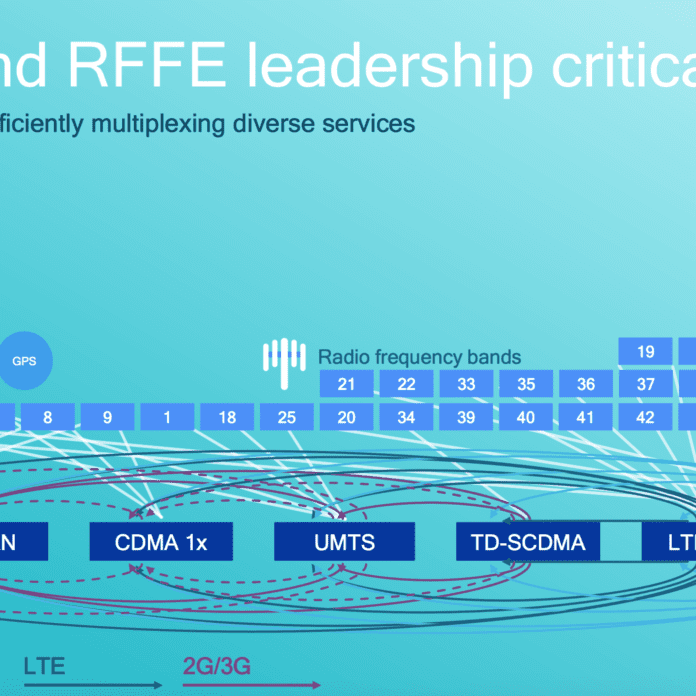The automotive market is driving massive growth in the semiconductor industry, with the value and complexity of semiconductors in vehicles set to jump in the next years as higher-level automation, electrification, and 5G technologies are introduced on roads, NXP Semiconductor told Electronica 2018 in Munich, in Germany.
Kurt Sievers, president at NXP, said cars will be generating 20TB of data per hour in the next few years, equivalent to the amount of data most consumers churn through on smartphones in six months. The integration of multiple sensors and hefty edge compute performance in vehicles will see car makers place high demands on semiconductor makers. Business will boom for them as a result, said NXP.
The Dutch firm said the value of semiconductors in cars will go from around $380 by 2020 to $450, in the years following, with the advancement of navigation, infotainment, and connectivity systems. The value will go even higher, it said, if level 4/5 automation, electrification, and 5G networking are layered in, too – to the tune of around $1,000, $500, and $100 for each, respectively.
“That gives you a flavour of how much of a sustainable long-term growth opportunity we have ahead of us – thanks to IoT arriving in the car industry,” said Sievers at the giant Munich electronics showcase.
But it is not just about incremental revenue streams, he said. “It is a fantastic place to be in terms of what we can do for society – in terms of zero emissions, zero accidents, zero congestion.”
The NXP president continued: “The way we think about the future, as the semiconductor industry, is very confident. More than that, we are excited. Because we are at a tipping point of yet another transformative and disruptive wave of innovation.”
This rising swell is generated by the broad IoT market, and made powerful by artificial intelligence (AI) and machine learning (ML) technologies in particular, he said.
It will go further than the arrival of either mainframe or personal computing. “IoT will touch all areas of our lives – as we go from smartphones, and move into the home, vehicles, industry, and cities. It will go far beyond our personal lives, to touch every aspect of society,” said Sievers.
One way to measure the impact is to count the number of connected endpoints, projected to go from 15 billion in 2015 to 30 billion by 2020, and 75 billion by 2025. “That’s a five-times increase in a decade,” he noted.
However, a better measure, he suggested, is to gauge the changes in “functional content” in the hardware and software – to assess what these endpoints will do.
He did this by running through the technological shift, rather than the societal impact, outlining four enabling technologies in this breaking wave of innovation, in the shape of ubiquitous sensors, low-latency connectivity, localised processing power, and end-to-end security.
Sensor technologies have to be better than their human equivalents, he said, which is no mean feat.
“We need a multitude of sensing technologies just to be on par with humans.” But the industry is getting there. Beyond line-of-sight sensing is enabling vehicles to see around corners, and through trucks and fog, he noted, in ways human eyes cannot,” he said.
“It beats human sensors. But it always takes a combination of multiple systems to achieve that excellence.”
On top, wireless connectivity is essential. “As long as we rely on wired connectivity, none of these applications and use case will fly.”
But, naturally enough for a microprocessor company, NXP said the “centrepiece” of the new technological revolution is processing, to deliver AI mechanisms to render masses of data as useful. But the change is all to come; progress so far has been more halting than the hype suggests.
“Everyone talks AI these days. We believe it is over hyped. The capability is still relatively limited. If you just look at how quickly and naturally your kids learn, you realise we have long way to go – to match the pace of human learning, from a technical and scientific perspective.”
Of course, AI has its place, he said. “In certain contextual environments, AIi and MK have great advantages.” For rule-based decision making, advanced analytics processes are finding their mark. The challenge, however, is the process is slowed by latency and bandwidth constraints between the application and the compute function, typically in a data centre.
The rise of edge computing will change this, as will the advent of new LTE and 5G networks. “The real explosion of AI relies on edge computing, bringing ML into devices you carry with you, in your car and in your home. AI and ML have to be transported from the cloud to edge systems.”
Edge computing will also reduce risk in security and privacy protection, the fourth pillar in Sievers’ round-up of the enabling technologies for digital transformation. Data will not have to be taken from the device or edge network for processing, at least, at a data centre, which reduces the opportunity for interception.
“Edge computing will be a significant advantage, again, because not all data has to be sent to the cloud, but kept in personal device, which is more secure than sharing data with big data centres.”

